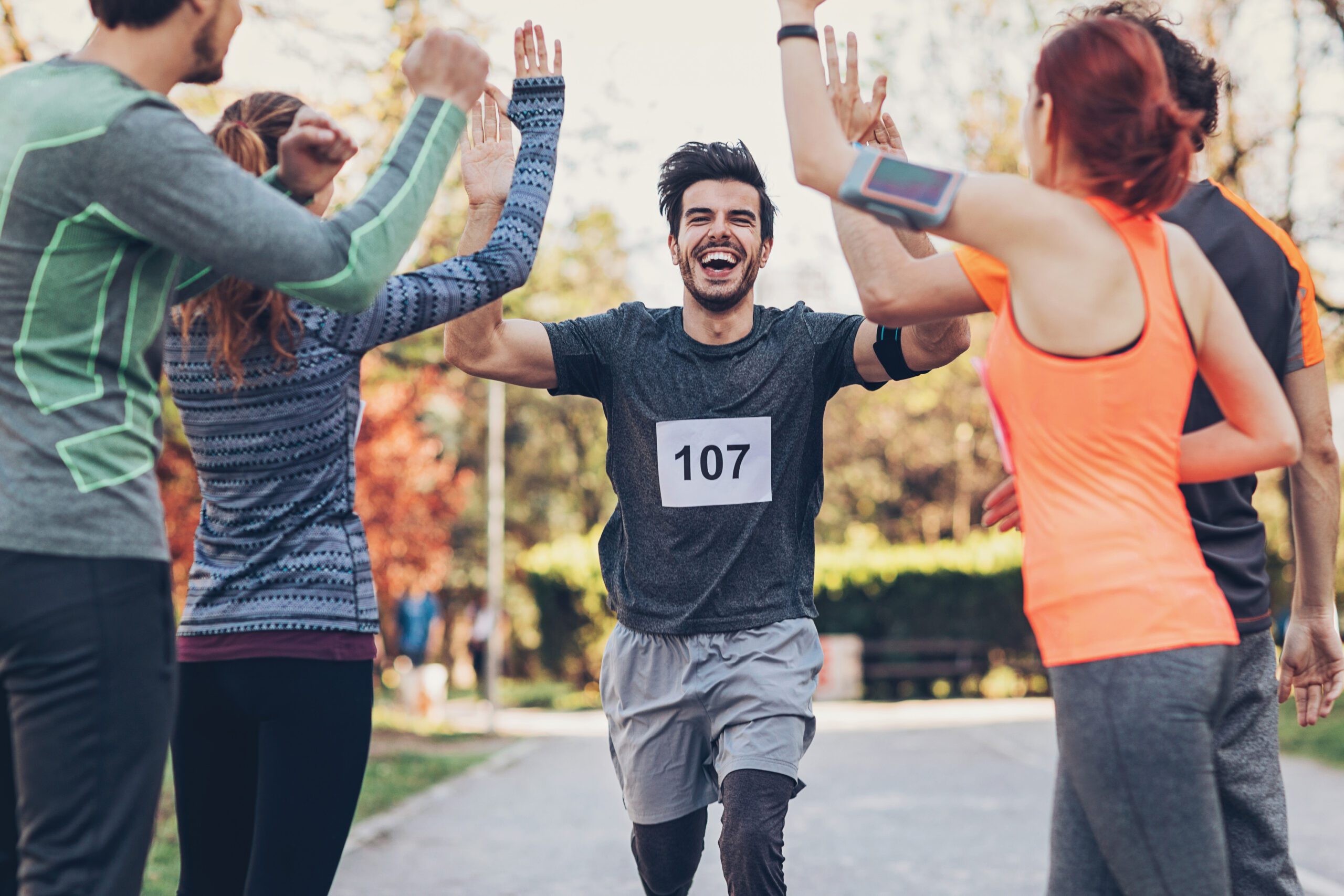
As your race approaches, these suggestions from our sports medicine doctors can help keep you healthy and racing your best.
Triathlons and long-distance races take a toll on the human body. They require a high level of training, physical resilience, and mental fortitude. Because of this great challenge, many triathletes often suffer injuries. In fact, research has shown that the most prevalent regions of overuse in triathletes include the lower back, knees, and lower legs. Cycling and running are the primary culprits, although common overuse injuries from swimming take place in the shoulders and rotator cuff.
What are some ways that triathletes gunning for a successful finish, or their personal best time can ensure an injury-free lead-up to their race? We looked to our partners at IRONMAN 70.3 North Carolina for insight. The Sports Medicine Division in the Orthopaedic department at Wilmington Health is comprised of board-certified orthopaedic surgeons who care for athletes of all levels. It specializes in ages and specializes in operative and non-operative treatment to optimize patients’ level of function with less pain and a faster recovery. Below are some pre- and post-race tips from the Wilmington Health sports medicine specialists for remaining healthy, fit, and injury free.
Preparation: It might sound simple, but preparation is key to preventing overuse injuries. An extensive period of training is necessary to succeed in triathlons, especially the ability to cross-train between swimming, biking, and running.
As you prepare for your race, it is important to remember that your sports medicine team has your best interests in mind. Please discuss any injuries with your health care team. They are here to help and can often prevent and rehab injuries without the need for surgery or prolonged absence from your activity. Prevention is the key, but if injuries ultimately occur, the team will provide prompt and appropriate treatment, returning you back to action as quickly as possible.
Health: As you prepare for your race, it is important to remember that your sports medicine team has your best interests in mind. Please discuss any injuries with your health care team. They are here to help and can often prevent and rehab injuries without the need for surgery or prolonged absence from your activity. Prevention is the key, but if injuries ultimately occur, the team will provide prompt and appropriate treatment, returning you back to action as quickly as possible.
Strength: A solid strength base allows for optimal performance of the musculoskeletal system and the ability to resist injury. A triathlon-specific strength, mobility, and flexibility training plan are highly recommended for all athletes.
Rest: While cardiovascular training and activity-specific strength/flexibility training are essential, athletes shouldn’t forget the importance of rest. During periods of rest, the body refuels and has a chance to adapt to the demands placed during training. Never overlook the importance of sufficient and appropriate time off.
Race-day smarts: During the race, staying hydrated and fueled is vital. The cycling leg is the best time to recoup any nutrition and hydration lost in the swim and to set yourself up for a long run ahead. Make sure that you’ve tested your hydration and nutrition plan in training, and that you’ve practiced packing everything on your bike and/or on your person, stashed in pockets, belts, etc. Know the location of each aid station on the bike and run courses, as well as what is being offered, and have a plan for which ones you’ll use on race day. On the bike and run, it is encouraged to drink every 15 to 20 minutes, typically alternating between sports drinks and water.
Post-race wisdom: While the celebration is mandatory at the completion of any triathlon, no matter the length, it’s important to cool down. An abrupt stop will encourage the pooling of blood in the working muscles, which could lead to dizziness. To counteract this, and help blood flow return to a normal pattern, walk at a leisurely pace for at least 5 to 10 minutes after the event. Getting water, reuniting with family and friends, retrieving your bicycle, walking to your hotel/car — all these suffice as appropriate post-race activities. Think relaxed, slow movements. Gentle dynamic stretching is also an essential cool-down activity; deeper stretching, foam rolling, and massage should typically occur 2 to 4 hours after the event. If overheating is a factor, consider a cool shower or ice bath.
If athletes have any specific concerns before, during, or after a race, please consult your health care provider or find our orthopaedic and sports medicine team along the race route.
Learn more about Wilmington Health’s Orthopaedic and Sports Medicine team.
